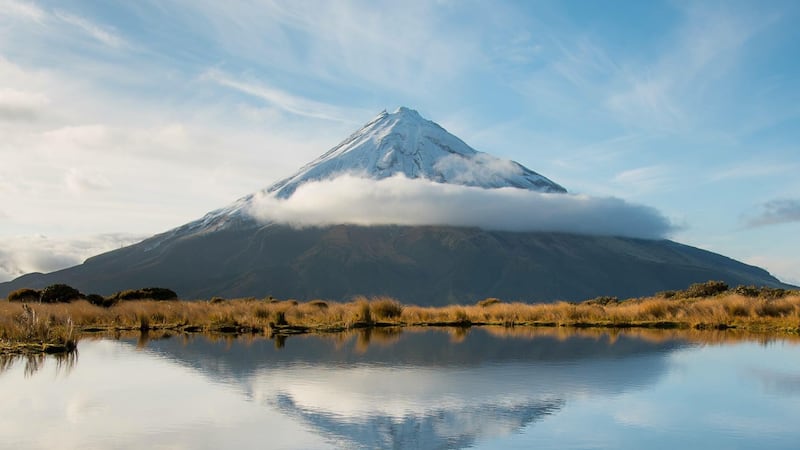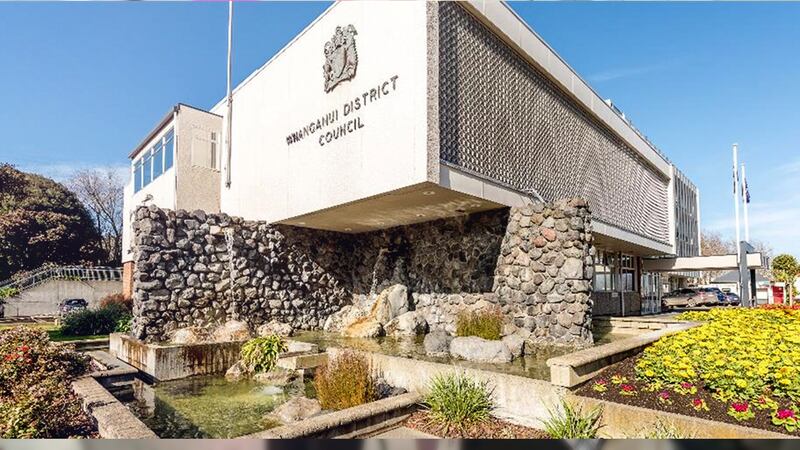This article was first published by RNZ
Thousands of place names have been changed throughout Aotearoa in the past few decades.
The changes - which affect suburbs, towns, parks, rivers, maunga and streets - are often made to restore te reo Māori names, but there are other reasons, too.
Some of the changes have been met with controversy, with passionate arguments both in favour of change and of the status quo.
But what’s the process for getting a place name changed, who can suggest (or object to) one, and what’s in a name anyway?
Here’s what you need to know.
Why change a place name?
One of the most common reasons is to restore a te reo name.
In recent times, one of the most high-profile proposed changes has been to return the Northland township of Russell to its original name, Kororāreka.
That name, which translates to ‘sweet penguin’, comes from the story of a sick chief who, after eating a soup made from little blue penguin (kororā), declared how sweet (reka) the penguin was.
The name Russell, on the other hand, was bestowed on the area by settlers in the 1840s. It honours the then-leader of the British House of Commons, Lord John Russell - a man who never set foot in Aotearoa.
Kororāreka Marae Society chair Deb Rewiri previously told RNZ the name change would give the township more of an identity: “There are 29 towns within the world that are called Russell, there will only be one Kororāreka.”
Sometimes, a place already has a te reo name, but it is spelled or phrased incorrectly, or missing its macrons.
The traditional spelling for the Lower Hutt suburb of Petone, for example, is Pito One - a reference to burying an umbilical cord (pito) in the sand (one).
The misspelling became widespread during colonial settlement in the 19th century. Now, there is a proposal to change it back.
Another example is the street formerly known as Epuni Street in Wellington, which has recently been corrected to Hōniana Te Puni Street to better honour the chief who was its namesake.
Epuni was a colloquial term for Hōniana Te Puni and many would see the use of that term as degrading, his descendant Morris Love said.
Some names have been changed to remove their association with colonisers, such as Putikitiki Street in Hamilton, which was previously called Von Tempsky Street.
Gustavus Ferdinand Von Tempsky, an army captain during the New Zealand Wars, was one of the leaders of the massacre at Ōrākau. His name was “a reminder of a past filled with despair and anguish and injustice”, Waikato-Tainui spokesperson Tukoroirangi Morgan said when the name was changed in 2022.
“For 159 years our people have had to carry the weight of history, of injustice, of wrongdoing, of murder, for a long, long time.”
In some cases, English names are replaced with other English names, such as Validation Park and Validation Place in Christchurch.
The park and road - formerly called Marylands Reserve and Marylands Place - were renamed earlier this year in honour of survivors of abuse at Marylands School, which used to sit on the site.
Survivor Darryl Smith said Marylands was “a place of terror” for many former residents and they were glad to see the name go.
“To me, validation means we are finally being validated by our country, by our city, saying they believe us.”
What’s the process for changing a place name?
Anyone in Aotearoa (as well as New Zealanders overseas) can propose a new name for a geographic feature, suburb or town by writing to the New Zealand Geographic Board.
There are a few restrictions on public submissions: Only the relevant council can request or consent that the name of a district or region be changed, only the relevant agency (such as KiwiRail or the local transport authority) can propose or consent to a name change for a railway station or railway line, and only the Department of Conservation can suggest or consent to a new name for a Crown reserve.
For proposals to be considered, they must abide by some rules. For example, if you want to name a place within New Zealand after a person, they must be dead. You must also provide evidence that you have consulted with local iwi on your proposal.
The Geographic Board meets three times a year to discuss the proposals and make decisions. If it agrees with the proposal, it will send it out for consultation, and notify the public using the New Zealand Gazette, public notices, press releases and social media.
If it does not agree with the proposal, it may choose to send a different name out for consultation.
Anyone can make a submission on the proposals.
Once the consultation period has closed, the Geographic Board considers the feedback and makes the final decision.
However, if it receives one or more objections and doesn’t agree with them, it can refer the decision to the minister of land information (currently Chris Penk) who makes the final call.
The decision is then published in the New Zealand Gazette.
Private businesses don’t have to change their names when this happens (for example, if Petone’s name is changed to Pito One, you could still call your bakery the Petone Bakehouse).
However, the change would apply to government agencies, which would have to update their maps, signage, brochures and other materials as they age and need replacing.

Treaty of Waitangi claims and name changes
Many place names have been changed as part of Treaty of Waitangi settlements.
A 2023 settlement, for example, officially consigned the name Mount Egmont to the history books in favour of Taranaki Maunga.
That same settlement saw the national park given a new name, Te Papakura o Taranaki (the highly regarded and treasured lands of Taranaki).
In the South Island, the 1998 Ngāi Tahu settlement saw Murdering Beach, near Dunedin, renamed Whareakeake, and 87 dual English/te reo Māori names established, including Aoraki / Mount Cook.
According to Toitū te Whenua Land Information New Zealand, name changes made through Treaty settlements provide “visible recognition of a claimant group’s connection to the whenua”.
The process for changing a name through a Treaty settlement is a little different to the process above, in that the public are not consulted on any proposals.
Instead, claimant groups put their desired name to Te Arawhiti (the Office for Māori Crown Relations), which negotiates Treaty settlements on behalf of the Crown.
The Geographic Board ensures the proposed place name meets its standards and policies, then makes a recommendation for the minister for Treaty of Waitangi negotiations (currently Paul Goldsmith), who makes the final decision.
Once official, names changed through the Treaty settlement process cannot be changed again without the written consent of the trustees from the iwi involved.
Maunga, awa, lakes, historic sites, bays, and islands can all be renamed through Treaty settlements, but populated places (like towns or suburbs) cannot. If iwi wish for these places to be renamed, they must make a proposal outside of the Treaty settlement process, using the Geographic Board process outlined above.
What about streets and parks?
Local councils have the power to make decisions about the features of their cities under the Local Government Act.
Anyone who wishes for a street, park or bridge to be renamed can put that suggestion to their council.
Different councils have different policies and guidelines, but they generally state such names must not be offensive or confusing.
Mana whenua will generally be consulted, but some councils may choose to undertake wider consultation, such as among residents or business owners in the area.
Some councils also have additional policies around the use of te reo Māori names. Wellington City Council’s policy Te Māpihi Maurea, for example, says te reo names must be considered where a location is impotent to mana whenua.
The people who have final say on new place names also differ from council to council. In Nelson, they are signed off by a three-person hearing panel made up of councillors on rotation, while in Wellington, all councillors, and the mayor, vote on the change.

High-profile name changes
One of the most hotly debated name changes in recent history is that of Whanganui, which was previously misspelled as Wanganui.
The error arose because local Māori pronounce ‘wh’ as ‘w’, while other iwi pronounce it ‘f’. When European settlers arrived, they heard the name as Wanganui, and that became the official spelling for both the river and the town.
An ‘h’ was officially inserted into the river’s name in 1991, but a 2009 proposal to do the same for the town was met with public outcry, including from mayor Michael Laws.
Eight hundred submissions and a non-binding referendum later, then-minister for land information Maurice Williamson made the decision to make both Wanganui and Whanganui official names.
“On balance I believe that alternative naming respectfully acknowledges the correct spelling of the Māori word ‘Whanganui’. It also respects the views of those who have always known the city’s name to be spelled ‘Wanganui’,” he said.
But that wasn’t the end of the story. In 2015, the district council proposed that the town and district drop the alternative spelling Wanganui and become known only as Whanganui.
According to the Geographic Board, the proposal said more and more people were using the correct spelling, demonstrating that relationships and times had changed.
Authorities agreed and the change was approved. Announcing the decision, then-minister for land information Louise Upston said it recognised that “‘Wanganui’ has no meaning” in te reo.
“We all have a role to play in helping to protect the culture and heritage of New Zealand’s communities. Ensuring place names are spelled correctly, so the stories behind them can be remembered and celebrated, is an important part of this.”
Other high-profile name changes included the naming of the North and South Islands in 2013. Prior to that, the islands did not have official names.
The change also made official the alternative names Te Ika-a-Māui (the fish of Maui) and Te Waipounamu (the greenstone waters).
In 2016, place names again hit the headlines after it emerged two hills and a stream in the foothills of the Southern Alps all had the n-word in their names. They were eventually changed to te reo names.
And in 2023, signs reinstating the name Pākaraka (formerly called Maxwell) at a settlement on the outskirts of Whanganui were ripped out of the ground just hours after being installed.
Names currently under consideration
Consultation is currently open for seven proposed name changes around Aotearoa.
These are:
- To correct the spelling of Petone, a suburb in Lower Hutt, to Pito One
- To correct the spelling of Takanini, a suburb in south Auckland, to Takaanini
- To correct the spelling of Takanini Railway Station to Takaanini Railway Station
- To make Te Tōangaroa the official name of an area on Auckland’s waterfront that currently has no name
- To make Maewa the official name of a suburb in Feilding’s north
- To correct the spelling of Abbots Creek, a stream in south Wairarapa, to Abbotts Creek
- To add a macron to the name of Rangitikei District, making it Rangitīkei District.
Submissions on the proposals can be made here.
By Anna Loren of RNZ.

